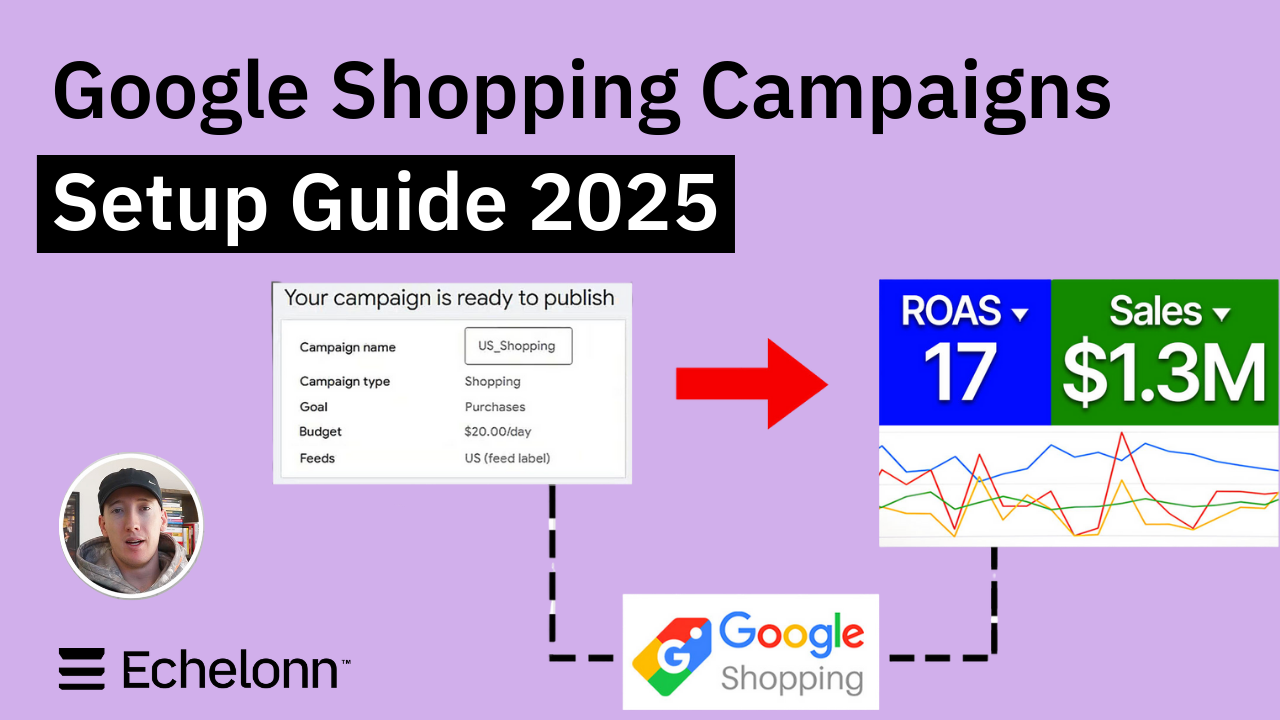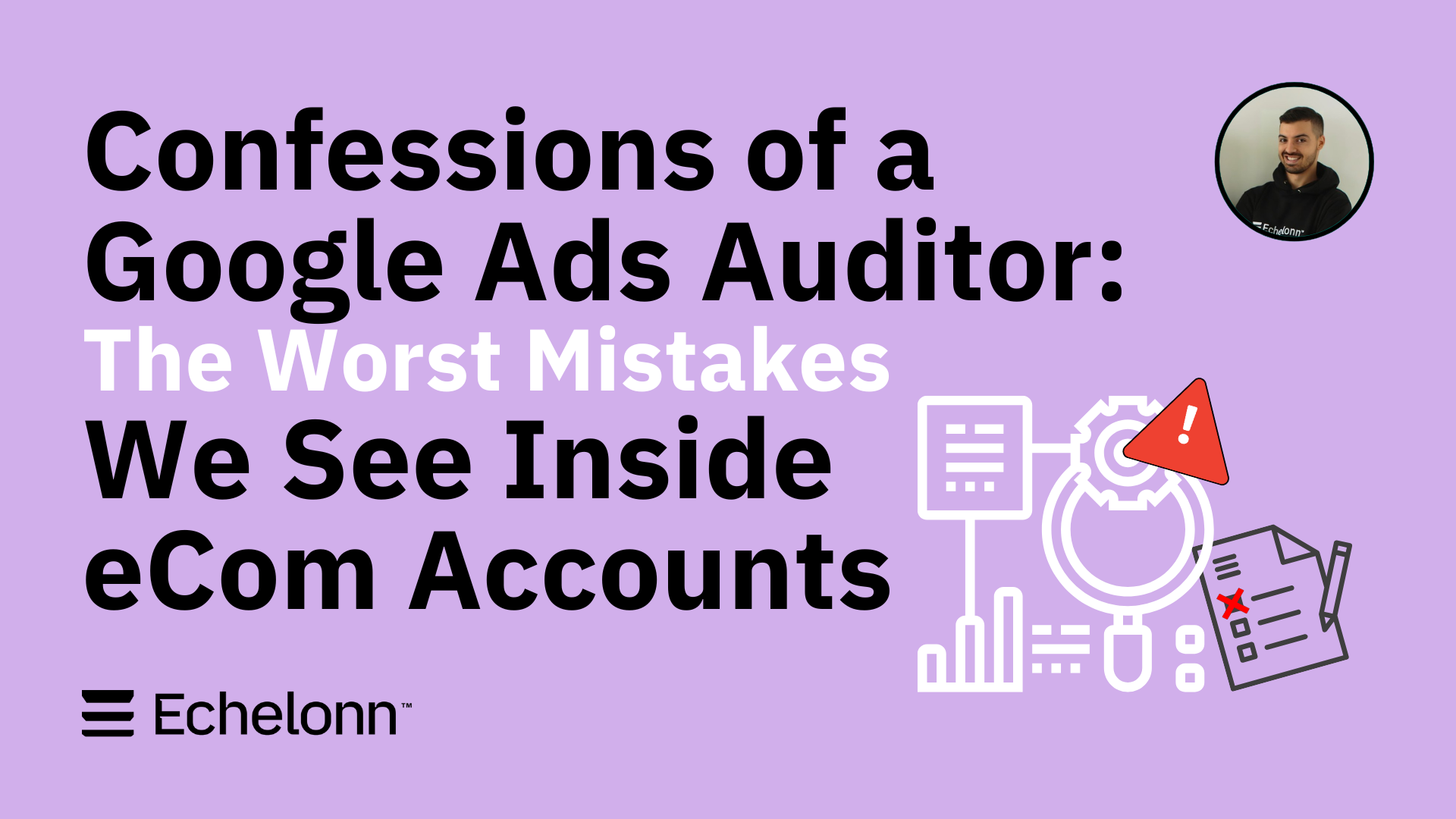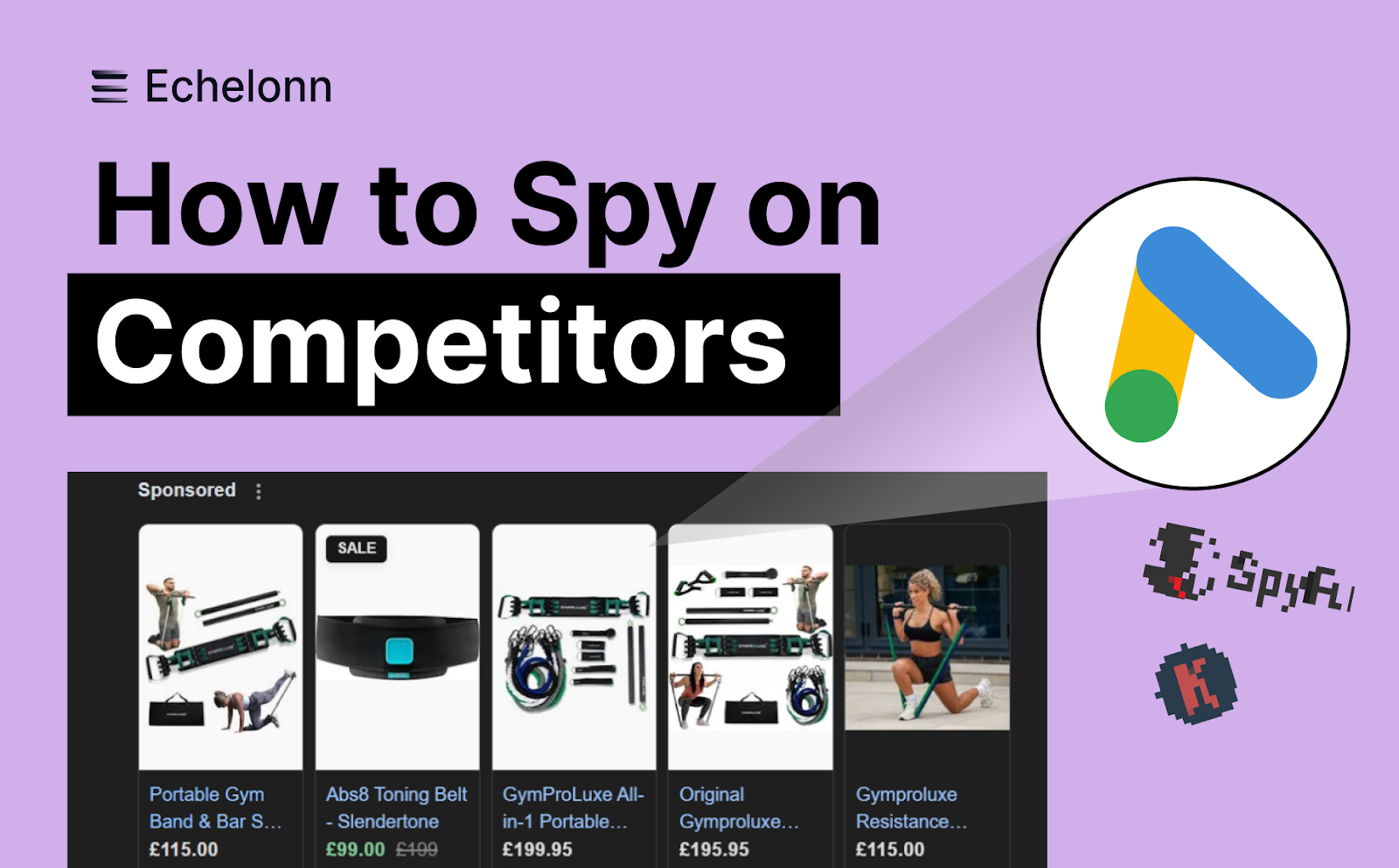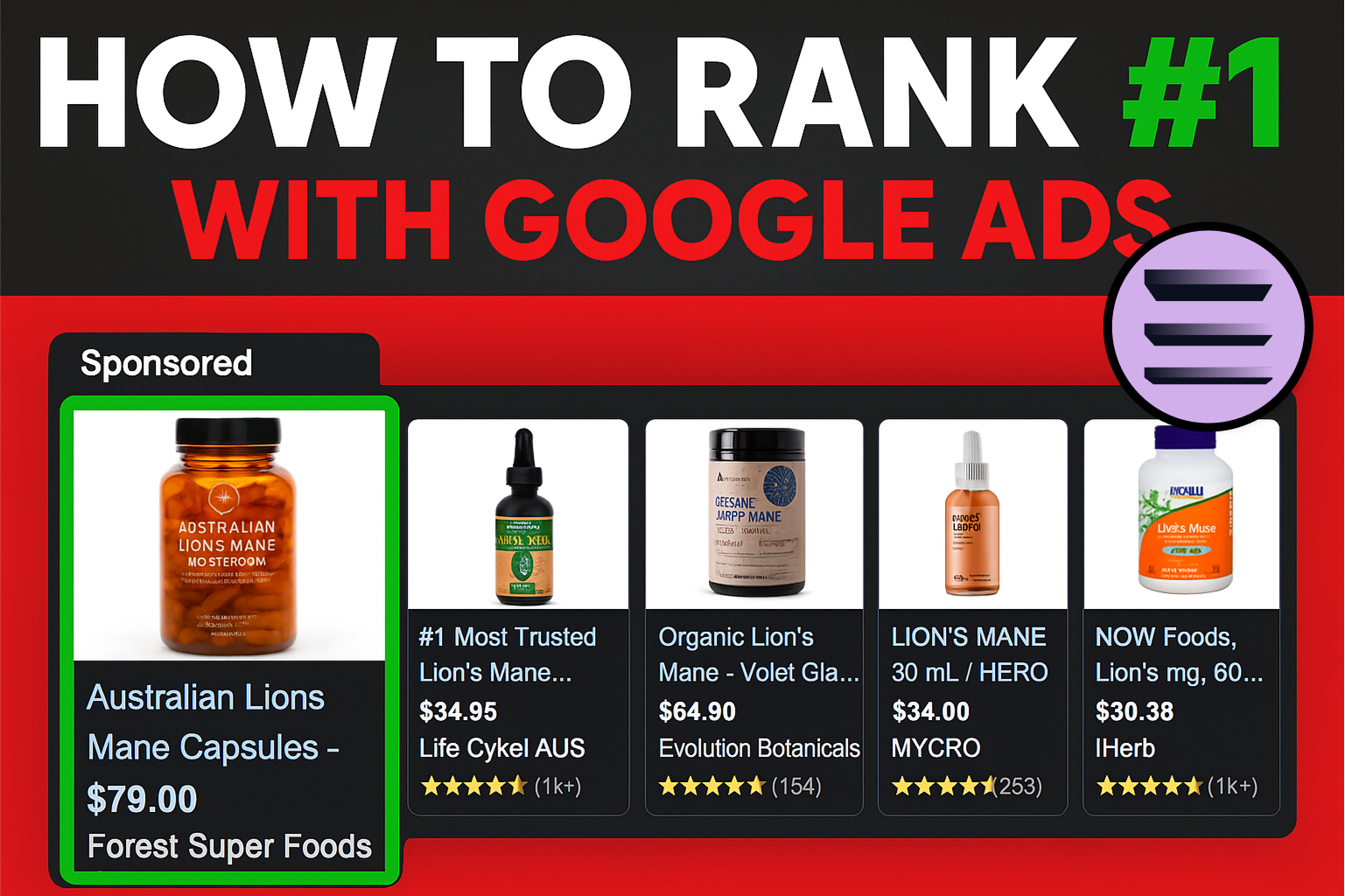Why 99% of Google Ads Experts Fail (& How to Find One That Won’t)

.png)
You’d think finding great Google Ads experts would be easy by now.
There are thousands of freelancers and consultants calling themselves performance marketers.
But when eCom brands come to us after working with one, the story is almost always the same.
They thought the expert was doing a decent job; the metrics “looked clean”, reporting “looked professional”, but revenue wasn’t growing… and their expert couldn’t explain why.
That gap between looking good and performing is where 99% of Google Ads experts fail.
And if you’re not experienced with media buying yourself, it’s incredibly hard to spot.
In this article, we break down the 5 most common ways Google Ads experts fall short and what the best ones do differently.
From metrics that mislead to strategies that scale nothing, you’ll see exactly what separates surface-level execution from real revenue-driving expertise.
Whether you’re managing a $25K/month account or scaling past $500K, these patterns show up everywhere.
And if you’ve ever felt like your Google Ads expert “should be doing more,” this will show you what “more” really looks like.
1. Google Ads “experts” obsess over metrics that don’t matter

99% of Google Ads experts will send you reports filled with surface-level metrics:
- CTR
- Quality Score
- Top-of-page rate
- Impression share
Yes, these metrics are important, but they’ll never paint you the complete picture of your account or campaigns.
The problem is that they make the account appear to be actively managed (when it’s not).
The reality is this:
When revenue is flat and profit isn’t improving, none of those metrics matter.
What eCom brands care about most is growth, not how many people clicked an ad or how often their brand showed above the fold.
They want to know 2 things:
Are we making more money? At a sustainable return?
The other problem is that 99% of strategists don’t connect the dots between technical metrics and actual performance. They treat Google Ads like a dashboard to be maintained instead of a profit centre to be scaled.
The best ones think differently. They focus on the inputs that drive profitable growth:
- Optimising feed attributes for relevance and scale
- Building clean paths from cold traffic to conversion
- Structuring campaigns around your product catalogue
- Matching keyword intent with the right pages and creatives
The best strategists will never get distracted by vanity metrics. They always make decisions that move the revenue line instead of fancy graphs in a report.
The best strategists also understand how Google Ads fits into the broader growth engine. They know when to account for rising Meta spend, how CAC shifts across channels, and which metrics give a true read on efficiency like:
- MER
- LTV
- CRR
- and nCAC.
Even if they’re not running other platforms, they think beyond Google. They look at performance through the lens of the business, not just the dashboard.
2. Google Ads “experts” use cookie-cutter setups for every brand
One of the most common mistakes we see when auditing Google Ads accounts is a generic campaign structure.
It’s usually some variation of the following:
- A single Performance Max campaign
- A branded search campaign
- A Dynamic Search Ads campaign
- A basic retargeting setup
At first glance, this might look fine. But when you look under the hood, you realise it’s the exact same framework used across dozens of other brands, regardless of catalogue size, margins, product types, or buyer intent.
This becomes a huge problem.
These setups fail because they’re too generic. They aren’t built around the specific mechanics of your business or the nuances of how your customers shop.
At Echelonn, we’ve audited 500+ eCom accounts. What we consistently find is that templated structures tend to deliver templated results. Growth flatlines because the campaigns aren’t aligned with any real business logic. They’re just “set up” to run.
For example, if you sell 500 SKUs across six product categories, a single PMax campaign with one asset group is never going to give you the level of segmentation or control you need.
You won’t be able to:
- Scale your bestsellers separately
- Exclude irrelevant queries by intent
- Allocate more spend to high-margin products
- Or adjust strategy across different funnel stages
This is where 99% of Google Ads experts fall short. They build accounts to look neat and never to drive growth.
The best Google Ads experts take the time to understand your margins, purchase cycles, average order values, and top-line business goals. From there, they shape campaigns to match.
Whether that means breaking out PMax by product line, layering in custom labels, separating branded and non-branded Shopping, or aligning Search structure with customer acquisition stages.
A cookie-cutter setup can only take you so far. Real performance is the result of custom architecture built for how your eCom brand grows.
3. Google Ads “experts” rely too heavily on automation

Another common pattern we see across underperforming accounts is blind faith in automation.
A lot of so-called Google Ads experts assume that handing control over to Google via Performance Max, Smart Bidding, Dynamic Search Ads, and auto-generated assets will magically optimise their campaigns.
And to be clear, we’re not anti-automation.
At Echelonn, we run PMax, use Smart Bidding, and build dynamic creative systems. These tools are essential if you want to scale efficiently, but only if executed cleanly and strategically.
But in the majority of accounts we audit, they’re not.
When a strategist sets up a campaign and leaves it to run indefinitely, without:
- Testing new creative
- Refining the product feed
- Mapping assets to different levels of intent
- Adjusting bidding strategy based on margin
- Reviewing exclusions and negative keywords
- Or managing how branded vs non-branded traffic is split…
…they’re not really “managing” the account at all. They’re hoping Google gets it right.
And Google doesn’t get it right, unless you give it the right data to begin with.
Some of the newer automation features are worth testing. But they often hand too much control to the system from day one, leaving budget and segmentation decisions entirely up to Google. Without clear guidance and structured inputs, that’s a risky way to scale.
“Google Merchant Center errors are one of the biggest obstacles retailers can face in reaching online consumers.” — DataFeedWatch
That’s why automation can often mask poor strategy. The performance looks fine on the surface, but behind the scenes, you’re leaking efficiency, missing revenue, and handing control to an algorithm that doesn’t understand your margins, seasonality, or goals.
The best Google Ads experts will never adopt a set-it-and-forget-it strategy. They work with automation, but they guide it.
They constantly test, refine, and optimise the inputs that shape performance:
- Feed relevance
- Creative quality
- Intent alignment
- Bidding structure
- Campaign exclusions
Put simply, automation is a tool and not a strategy.
“Stop letting Smart Bidding run wild. Control and optimize it for better conversions, smarter spending, and real performance gains.” — Search Engine Land
And if your Google Ads expert can’t explain why things are set up the way they are, or what’s being actively monitored and improved, you’re not scaling with control.
4. Google Ads “experts” don’t understand creative

Creative has become one of the biggest performance drivers inside Google Ads, especially across YouTube, Display, and even Performance Max.
Yet, most Google Ads experts turn a blind eye to creative altogether.
They focus entirely on campaign structure and bidding logic… and hope the existing content is “good enough.” But when creative isn’t aligned with audience intent or campaign objectives, your performance will plateau, no matter how smart the targeting is.
This is a serious gap.
Your strategist doesn’t need to be a full-time video editor or copywriter. But they do need to understand what good creative looks like and how it fits inside the broader strategy.
That includes knowing how to adapt existing creative assets to Google’s formats, and what creative styles perform in an eCom context across YouTube and PMax. This strategic play can result in huge wins.
If your strategist can’t:
- Brief creators or UGC partners
- Tailor messaging by funnel stage
- Spot creative fatigue before performance drops
- Optimise hooks and CTAs based on actual performance data
- Or guide the development of new formats like Shorts and Bumpers…
…you’re leaving one of the most scalable levers in your account untouched.
This matters more than ever with formats like YouTube Shorts and PMax video placements, where performance is often driven by the first few seconds of creative.
“YouTube is a cornerstone of paid video advertising, offering unparalleled reach and creative possibilities. But for marketers, it’s also one of the most challenging platforms to measure effectively.” — Search Engine Land
We’ve seen campaigns where the right creative dropped CAC by 40%. But that only happens when your strategist understands both sides: the media buying and the messaging.
The best Google Ads experts aren’t simply spreadsheet operators; they bridge the gap between data and creative, and make sure every ad is aligned with the audience, the offer, and the channel it’s running on.
Because if the creative doesn’t convert, nothing else matters.
5. Google Ads “experts” don’t take ownership of the result
This is the part that’s hardest to detect and the most important to get right.
Many Google Ads experts look like they’re doing their job; they’ll send reports on time, highlight positive trends and respond to your emails.
But when growth stalls, they’ll give their own reasons why performance is “fine” or an excuse for why it’s not.
You’ll hear things like:
- “It’s a seasonal dip.”
- “We’re still in the learning phase.”
- “We’re waiting on a few things for the new creative.”
In other words, they’re managing the channel and not driving the result.
This is the difference between someone who runs your campaigns and someone accountable for your growth.
At Echelonn, one of the first things we look for when hiring media buyers and strategists is ownership because Google Ads is not a static platform. Performance changes week to week, new products launch, and new formats are introduced. Someone needs to be steering the ship.
Just recently, one of our CSMs received a handwritten thank-you card from a client. It was thoughtful, specific, and completely unexpected. It was the result of our CSM caring about the details, asking the right questions, and treating the account like it was their own.

That’s what ownership looks like, and that’s the kind of relationship clients remember.
So if your strategist isn’t proactively spotting issues, identifying growth levers, or flagging what’s not working, they’re not acting like a partner.
The best Google Ads experts don’t wait for permission to optimise, they look at your account the way a founder would by asking the right questions and bringing solutions to the table. They also make sure the account is growing.
Final thoughts
The criteria for finding real Google Ads experts must never be based on buzzwords or impressive-looking presentations.
You have to find an expert who understands your business right down to the core, builds around your margins, works hands-on with your data and creative, and takes ownership for growth.
That’s what separates the ones who manage your account from the ones who scale it.
At Echelonn, we’ve seen firsthand how easy it is for strategy to go stale, for automation to take over, and for “experts” to hide behind metrics that don’t move the needle.
But we’ve also seen what happens when the right person is in the seat and the right structure is in place.
The difference isn’t subtle. It shows up in revenue, in ROAS, and in how fast your brand grows.

Ready To Start Scaling Today?
Scaling Your Favorite eCommerce Brands To The Highest Levels Through Google & YouTube Ads.

.svg)
Get Smarter About How To Scale Your Brand...
Discover Insider Knowledge On How We Scale Brands From 7 Figures All The Way Up To 8-9 Figures With Google Ads.
More Articles Like This.
Find answers to common queries about our services and how we can help you.
.svg)
.png)
How to Improve Your Google Ads Conversion Rate
.png)
The Right Way to Link Shopify and Google Ads for Scalable Growth

Google Shopping Campaigns Setup Guide 2025
%20(2).png)
Should You Run Google Ads for Your Website? (Honest Answer)

Confessions of a Google Ads Auditor: The Worst Mistakes We See Inside eCom Accounts

How to Spy on Competitor Google Ads: Complete 2025 Guide
%20(2).png)
7 Questions to Ask Before Hiring a Google Ads Consultant

How to Rank #1 on Google Ads: Complete Shopping & Search Guide 2025
.png)
Learning Google Ads in 2025: The Roadmap Nobody Talks About
%20(1).png)
What Makes a Google Ads Specialist Worth $10,000/Month?

Why Cheap Google Ads Consulting Costs You $180,000+ in Lost Revenue
.png)
Why 99% of Google Ads Experts Fail (& How to Find One That Won’t)
.png)
5 Google Product Feed Fixes for eCom Growth
.png)
Google Ads Campaign Structure: Why 95% of Brands Waste Budget on Mixed Traffic

In-House vs Agency Google Ads: Which Delivers Better ROI in 2025?
.png)
How to Scale Google Ads With a Small Budget | Setup and Optimization

Google Shopping Optimization: 11 Proven Tactics for Maximum ROAS
%20(3).png)
eCom Growth Strategy: How We Scaled a Supplement Brand From $1.9M to $8.6M With Google Ads
%20(4).png)
Google Merchant Center Fix: How to Improve Rankings With Accurate Shipping Times

CTR Is Misunderstood by 95% of the PPC Industry (What to Optimise for Instead)
.png)
Google Ads AI | Manual vs Automated Campaign Performance

Complete YouTube Ads Guide 2025 | 3 Formats, 5 Principles, Proven Results
%20(2).png)
eCom Growth Strategy With Google Ads in 2025
.png)
Google Marketing Live 2025: 11 Key Takeaways for Marketers
%20(1).png)
YouTube Advertising Strategy: How to Drive Results Across Every Format

Google Shopping Feed Optimisation: Tips for Better Results

How Long Does it Take for Google Ads to Work?

YouTube Ads Cost in 2025: How to Launch & Optimize a YouTube Advertising Campaign

Search Ad Strategies to Maximize Sales with Google ads for eCommerce (2024)

2025 Google Shopping Ads: Ultimate Guide, Benchmarks, and Pricing Breakdown


.svg)

.svg)
.svg)





